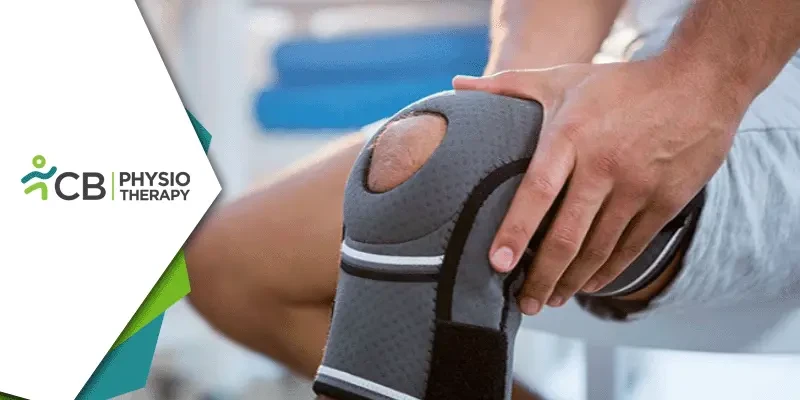Multiple ligament knee injuries can be devastating, affecting mobility, strength, and the ability to perform daily activities. When two or more of the primary stabilizing ligaments of the knee—such as the anterior cruciate ligament (ACL), posterior cruciate ligament (PCL), medial collateral ligament (MCL), and lateral collateral ligament (LCL)—are injured simultaneously, the knee becomes highly unstable and prone to further damage. While surgery is a common treatment for such injuries, conservative management through physiotherapy offers numerous benefits, especially for patients looking for a non-surgical approach or those unable to undergo surgery immediately.
Why Opt for Conservative Management?
Conservative management is a non-surgical approach focusing on pain management, stabilization, strength restoration, and functional rehabilitation. While it may not be appropriate for every case, many patients can achieve excellent outcomes through physiotherapy. The decision depends on factors such as the severity of the injury, the patient's age, activity level, and personal preferences.Key Benefits of Managing Multiple Ligament Injuries Conservatively
1: Pain Relief and Swelling Reduction: One of the most immediate goals of conservative management is to reduce pain and swelling. Multiple ligament injuries often cause significant discomfort and inflammation. Physiotherapists use techniques such as cryotherapy (ice therapy), electrical stimulation (like TENS), and manual therapy to manage these symptoms effectively.2: Avoidance of Surgical Risks: Surgery, while often effective, comes with inherent risks such as infections, blood clots, and anesthesia-related complications. Additionally, post-surgical recovery can be lengthy and may not guarantee full knee stability or function. For individuals who cannot undergo surgery due to medical reasons or who wish to avoid the risks associated with surgical intervention, conservative management is a safer alternative. By focusing on strengthening the muscles around the knee, physiotherapy provides a viable option for improving joint function and stability.
3: Early Functional Recovery: A major advantage of conservative management is the emphasis on early functional recovery. Physiotherapy helps patients regain knee function faster compared to a surgical approach, where initial immobilization may delay muscle activation and range of motion exercises. Early mobilization through controlled exercises prevents joint stiffness, maintains muscle tone, and accelerates the healing process. It also encourages the production of synovial fluid, which nourishes the knee joint and reduces friction.
4: Restoration of Muscle Strength: Muscle atrophy (loss of muscle mass) is a common issue after a significant knee injury. Physiotherapy targets key muscle groups, such as the quadriceps, hamstrings, and calf muscles, to restore strength. By progressively loading these muscles with specific exercises, patients can build a strong support system around the knee. This improved muscle strength compensates for the injured ligaments and provides enhanced stability, reducing the risk of further injuries.
5: Improvement in Balance and Proprioception: Multiple ligament injuries often impair proprioception, the body’s ability to sense joint position and movement. Physiotherapists incorporate balance and proprioception training into the rehabilitation program to retrain the body’s neuromuscular system. Exercises using balance boards, stability pads, and single-leg stances help the patient regain their sense of joint position and improve overall balance. Better proprioception translates into reduced injury risk and greater confidence in daily activities.
6: Customized and Progressive Rehabilitation: One of the greatest strengths of conservative physiotherapy management is the individualized and progressive nature of treatment plans. Physiotherapists tailor the rehabilitation program to meet the specific needs of each patient, taking into account the extent of the injury, pain levels, and functional goals. As the patient makes progress, the exercises are modified and intensified to ensure continuous improvement.
7: Focus on Functional Training: Conservative physiotherapy emphasizes functional training to prepare patients for real-world activities. For athletes, this means sport-specific exercises to simulate the movements required on the field. For non-athletes, functional training focuses on everyday tasks like climbing stairs, walking, or lifting objects.
Essential Components of a Physiotherapy Program
A conservative physiotherapy program for multiple ligament knee injuries typically includes several key components:1: Protective Bracing and Support: To prevent further damage, a knee brace may be used to stabilize the joint while still allowing limited movement.
2: Range of Motion Exercises: Gentle exercises are introduced early to maintain and gradually increase the knee’s range of motion.
3: Strengthening Exercises: Both isometric and dynamic exercises are used to build muscle strength without stressing the ligaments.
4: Balance and Proprioception Training: These exercises are crucial for restoring the body’s ability to sense and control joint movement.
5: Functional and Sport-Specific Training: This phase prepares the patient to return to their desired level of activity, whether that be sports, work, or daily life.
Managing multiple ligament knee injuries conservatively through physiotherapy offers a host of benefits, from pain relief and faster functional recovery to avoiding surgical risks and improving overall knee stability. While this approach may not be suitable for everyone, it provides an effective and individualized path to recovery for many patients. By emphasizing muscle strength, joint stability, and proprioception, physiotherapy empowers individuals to regain control of their knee function and return to their daily activities with confidence.
If you or someone you know is dealing with a complex knee injury, consulting a skilled physiotherapist can open up a world of possibilities for conservative treatment. With dedication and a personalized approach, conservative physiotherapy can pave the way to a stronger, more stable knee and a higher quality of life.

